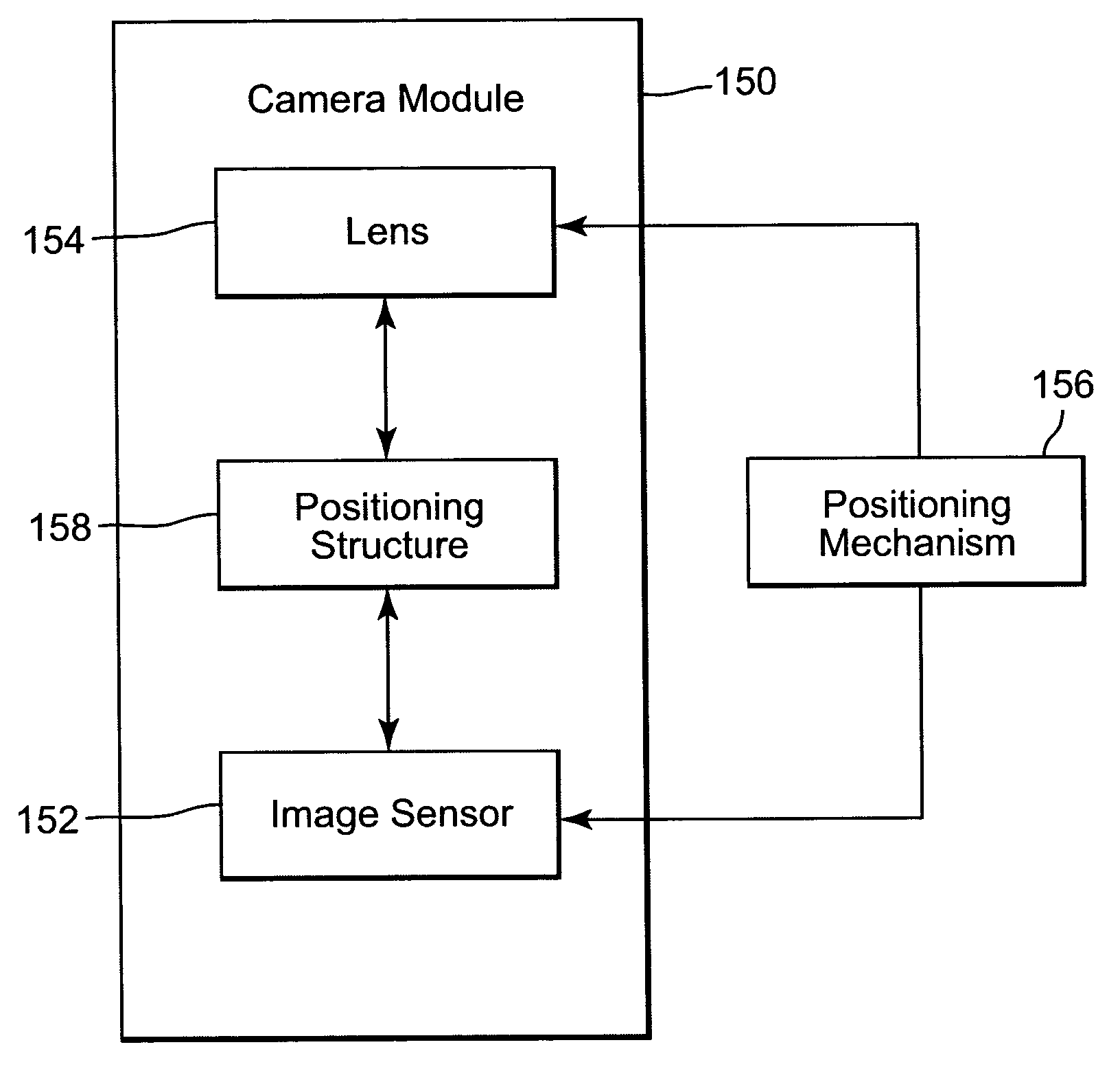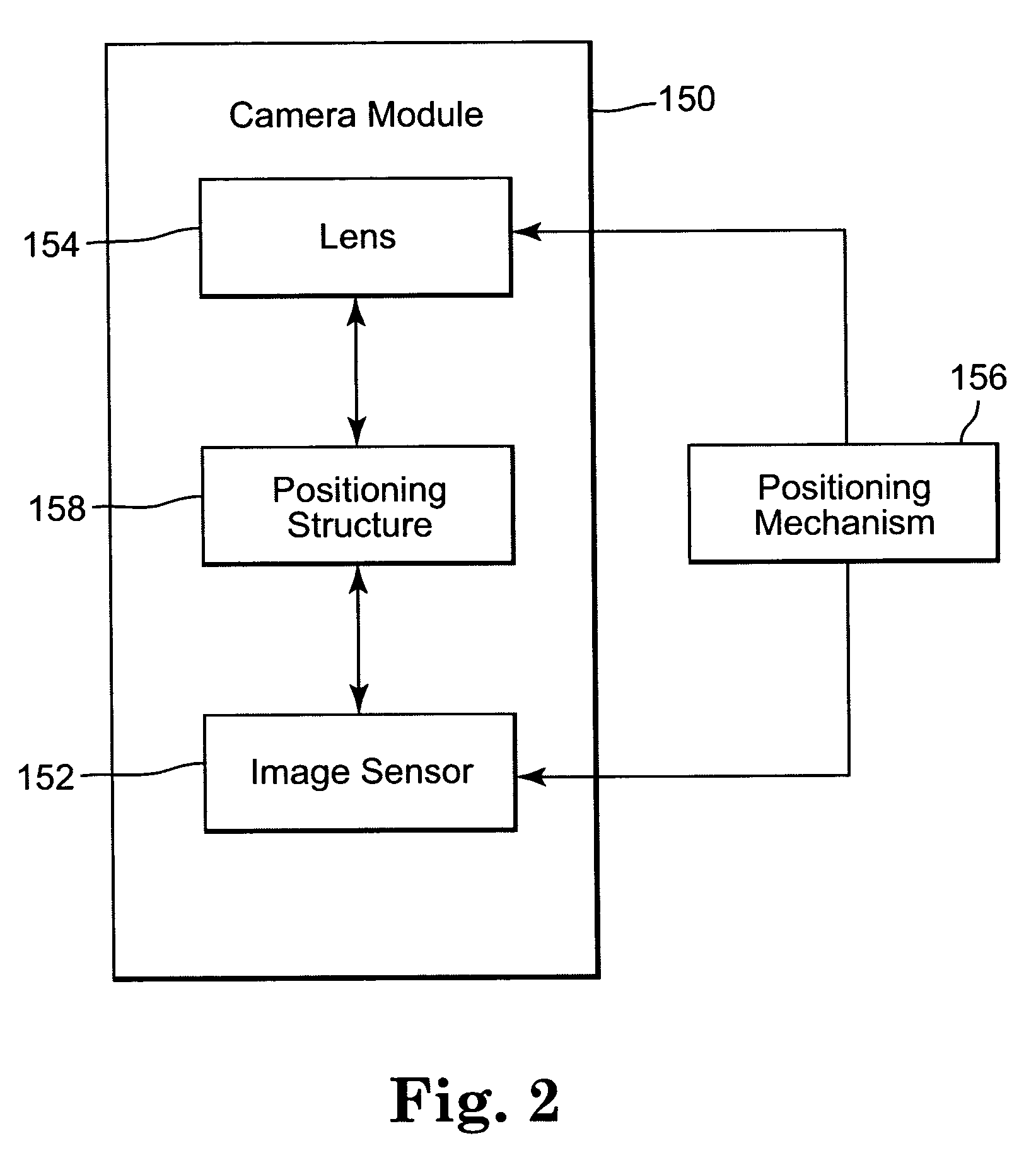Fixed-focus camera module and associated method of assembly
a technology of fixed-focus camera modules and assembly methods, which is applied in the direction of camera focusing arrangement, printers, instruments, etc., can solve the problems of limiting the ability to use low-cost construction materials, labor-intensive assembly processes of conventional digital camera modules, and high cost of materials
- Summary
- Abstract
- Description
- Claims
- Application Information
AI Technical Summary
Benefits of technology
Problems solved by technology
Method used
Image
Examples
Embodiment Construction
[0019] In the following detailed description of the preferred embodiments, reference is made to the accompanying drawings which form a part hereof, and in which is shown by way of illustration specific embodiments in which the invention may be practiced. It is to be understood that other embodiments may be utilized and structural or logical changes may be made without departing from the scope of the present invention. The following detailed description, therefore, is not to be taken in a limiting sense, and the scope of the present invention is defined by the appended claims.
[0020] Part of the assembly process of fixed-focus digital camera modules involves achieving a proper focus of the image projected onto the image sensor. Focusing is typically accomplished by positioning the lens relative to the image sensor. FIG. 1 is a diagram illustrating various ways of positioning an image sensor 152 and a lens 154. Typically, the positioning is along five degrees of freedom: translational...
PUM
 Login to View More
Login to View More Abstract
Description
Claims
Application Information
 Login to View More
Login to View More - R&D
- Intellectual Property
- Life Sciences
- Materials
- Tech Scout
- Unparalleled Data Quality
- Higher Quality Content
- 60% Fewer Hallucinations
Browse by: Latest US Patents, China's latest patents, Technical Efficacy Thesaurus, Application Domain, Technology Topic, Popular Technical Reports.
© 2025 PatSnap. All rights reserved.Legal|Privacy policy|Modern Slavery Act Transparency Statement|Sitemap|About US| Contact US: help@patsnap.com



